2016 Cadillac CTS-V Review: Is This The Car To Make Cadillac Great Again? [VIDEO]
On a quiet street in Staten Island, New York, a little boy tugs his mother's hand and points at the Cadillac CTS-V I’m driving. He probably doesn’t know what it is, but he’s excited to see it. Noticing his enthusiasm, I downshift to second gear and make the monstrous supercharged V8 play some music. The boy jumps and hollers, enamored with such a silly thing. I can't help but bounce and giggle in my seat, seeing his joy and probably some of my younger self in him. “He’s going to be into cars when he gets older,” I think.
Maybe, I think, this is why we love cars. It’s why I came to love the CTS-V. It’s a silly thing.
Cadillac first tried to improve its tarnished image about 10 years ago when it revealed the first-generation CTS. It was, at the time, a radical departure for the automaker, which at the time (and for 30 years prior) had rolled out cures for insomnia that your grandparents drove around their Florida retirement community. The 2016 CTS-V is Cadillac’s most powerful car to date and a vehicle that’s seen as the automaker’s first real attempt to challenge the dominance of German sports sedans from BMW, Audi and Mercedes.
It has a polarizing design, too, which to my mind is a good thing.

“It’s not smooth,” one of my colleagues said. “There are too many angles,” he added, expressing his disdain for Cadillac’s love affair with tight creases and bends. I’m not buying that, though. The CTS-V is proof that Cadillac doesn’t have to completely emulate the smooth Germans, even if they’re following the same formula. It’s a bullish design language, and I doubt you’ll ever mistake the CTS-V for anything else.
But I think it’s fantastic to look at, especially in a darker color like the Shadow Grey press car I had. It manages to stand out in a way its rivals just can’t, especially with the carbon fiber trim pieces (those will cost you extra, of course). Out of all the big, fast luxury sedans, it’s the one I’d pick out in a heartbeat, assuming looks were the only part of the equation.
Interior
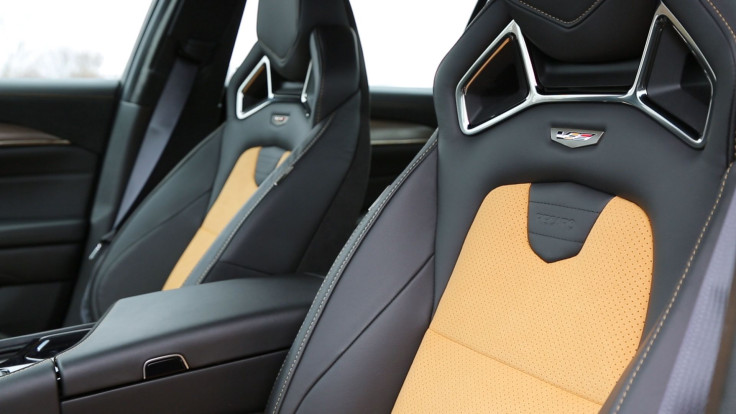
I'm conflicted; I genuinely enjoyed being in the CTS-V, but the interior has its share of problems.
Cadillac has done well with materials, showing excellent use of leather and aluminum, while hiding most of the lower-level plastic. Nearly everything you touch on a normal basis feels as solid as the best BMW has to offer these days, and the cabin is so quiet at highway speed that I had to periodically double-check that the engine was still running. The Recaro seats are gorgeous, insanely comfortable and bolstered enough to keep you planted for anything this side of a "Fast & Furious"-style airdrop. The steering wheel is meaty and a great fit for my large American hands.
But completely ditching physical buttons is a trend that seriously needs to stop. Using touch/haptic feedback buttons in place of old school knobs sure does look nice. But in the real world you’ve got to either feel around for the feature you want (using the Force, presumably, because the “guides” don’t really help) and tap it the appropriate number of times, or force your brain to commit the control layout to memory. But until you do that, you’ll likely take your eyes off the road, which may produce undesirable results.
Performance
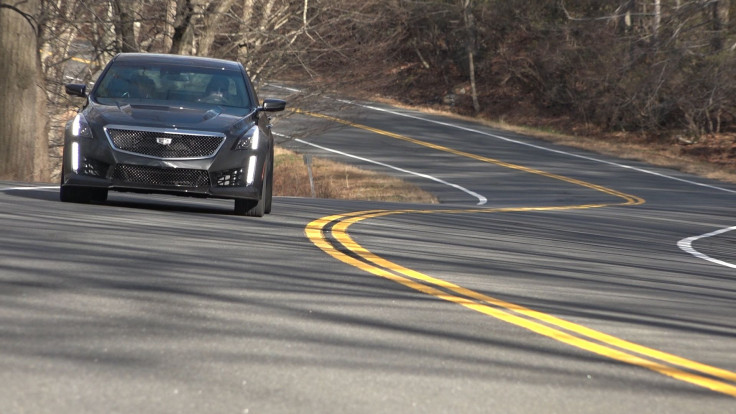
The 6.2L supercharged V8 is an animal. If you so much as cough on the throttle, you’re going 10 mph faster. What this translates to on the street is a test of willpower; though you’ll probably be the fastest thing in a 50-mile radius, using even a third of that power will get you to illegal speeds very quickly. Never mind the raw volume of the CTS-V’s exhaust, which will alert everyone two towns over to your presence.
At speeds where normal cars would be crying for mercy, the CTS-V yawns. It’s not going to be bothered until you’re going far more quickly than is reasonable on public roads, even on snow tires. Yes, Cadillac will toss a pair of snow tires on the car, as if that’s not a complete farce.
If you so much as look at the CTS-V the wrong way, the rear tires will break loose — hell, at one point I spun the rear tires in fifth gear. You’d expect that from its Corvette brother, but lighting the rear tires up in this makes you feel like an absolute lunatic. The CTS-V lets you corner like one, too: initial turn-in and rotation is fantastic, though the stability control will intervene to keep you from becoming a statistic. I couldn’t seem to turn it completely off.
The Cadillac has four electronically controlled modes to choose from. The first is Touring, which keeps the exhaust quiet (via a set of muffler bypass valves) and leaves the magnetic suspension in its softest setting. Second is Sport, which opens the exhaust up completely, stiffens the suspension and tightens the steering response. Third is Track, which quickens steering and suspension response even further, and seems to partially disengage stability control. Last is Snow/Ice, but that exists for boring reasons you don’t care about.
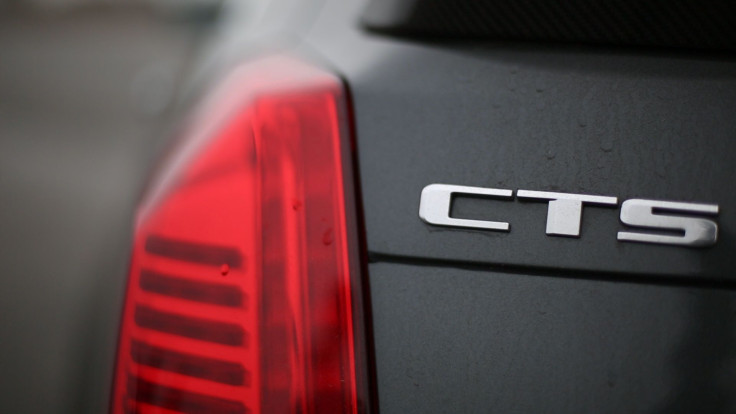
Long story short, Touring is for relaxation, Sport is for street fun and Track is for, well, the track. And burnouts. Not that I did any of those, of course. I mean, it’s not like it’s incredibly easy to do that with 630 pounds of torque on tap.
Also worth mentioning are the brakes. The CTS-V sports titanic Brembo brakes (6 piston front, 4 piston rear), but they’re old school; many modern rivals offer carbon ceramic brakes that will change the geometry of your face, but Cadillac went with iron. The Cadillac’s brakes still bite hard initially, though the pedal travel is a bit longer than expected. It improves once there’s substantial heat in the rotors, though I’m not sure how many owners will actually take this kind of car to a track (if you buy one, please track it!).
Is the CTS-V better to drive than the BMW M5 or Audi RS7? Having not driven those yet (wink, nudge, BMW/Audi) it’s tough to say, but they’d have to be nearly perfect to have a shot. One area they might have an advantage is the transmission. The CTS-V carries the same 8-speed automatic that’s available in the current Corvette and ATS-V, among other things, and while it is competent while cruising, it’s a mostly conventional automatic gearbox. It still uses a torque converter.
Though it is relatively quick-shifting, it’s just not as fast or satisfying as a good dual clutch transmission, which some of its rivals use. If you’re using the paddles, you have to think a half second ahead and pull the paddle so the transmission has a little extra time to process your request. Or Cadillac could have just used the Corvette’s manual transmission, as had been tradition thus far. On the upside, the computer does do a commendable job predicting your requests when you leave it in automatic mode.
Toys
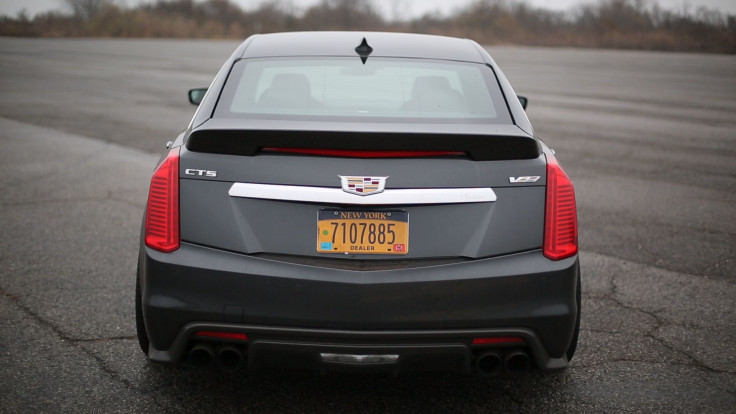
Cue, Cadillac’s infotainment system, is better than it used to be. But I’d still rather never see it again. Luckily, there is a solution of sorts — assuming you own an iPhone: Apple CarPlay. It's better, mostly. CarPlay is nice for controlling music and fielding phone calls/texts, but navigation is limited to Apple Maps. Even if you have superior navigation applications installed.
So you’ll likely find your way back to the Cue navigation app for most of your needs. It’s not the worst thing in the world, though the UI isn’t exactly attractive, and there’s far too much information on the screen.
The CTS-V also features a Bose audio system, which is perfectly serviceable. It didn’t blow me away, but to be honest no Bose system ever really has. Besides, I’d rather just listen to the V8 half the time anyway. There’s also your standard collection of seat power and memory options, lane departure warnings, radar guided cruise control, and collision warning systems. The same things you’ll see on regular CTS models, but they are nice to have here as well.
What’s likely my favorite electronic feature is the heads up display (HUD), which shows current speed and can be supplemented with directions, music and other information. It’s nice to keep your eyes mostly on the road, even while checking speed. I’m a bit sad my car doesn’t have a HUD.
Value
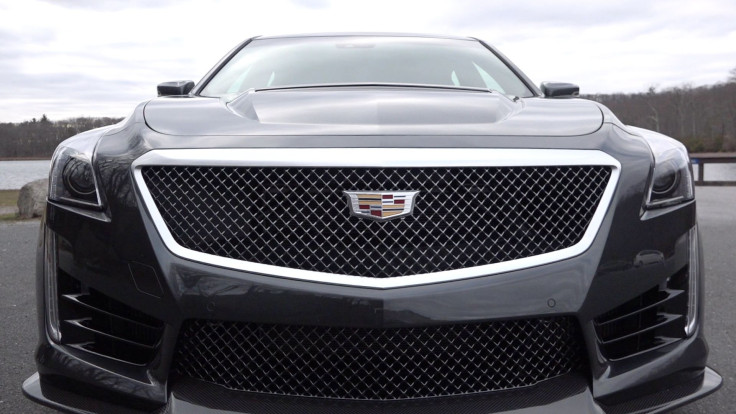
The third-generation CTS-V starts at around $85,000, about $10,000 less than the BMW M5, while offering nearly the same levels of performance. The car I tested had around $8,000 in options for an MSRP of about $93,000, which is a lot of money, but to get the M5 with similar options you’ll have to shell out more than $110,000.
An Audi RS7 starts at nearly $110,000, and a Mercedes E63 AMG starts at over $100,000. Both have all-wheel drive, if that’s what you’re looking for.
Verdict
This CTS-V is absolutely out of its mind. The numbers would suggest it’s just as capable as anything the Germans are currently offering, but it's much better looking than its rivals, if you ask me. And you’re here, so you have.
Cadillac has made something utterly focused, clearly designed to beat Germany at its own game, but somehow it never feels like it takes itself quite so seriously. Maybe it was all of the giggling. It’s a silly thing.
© Copyright IBTimes 2024. All rights reserved.





















